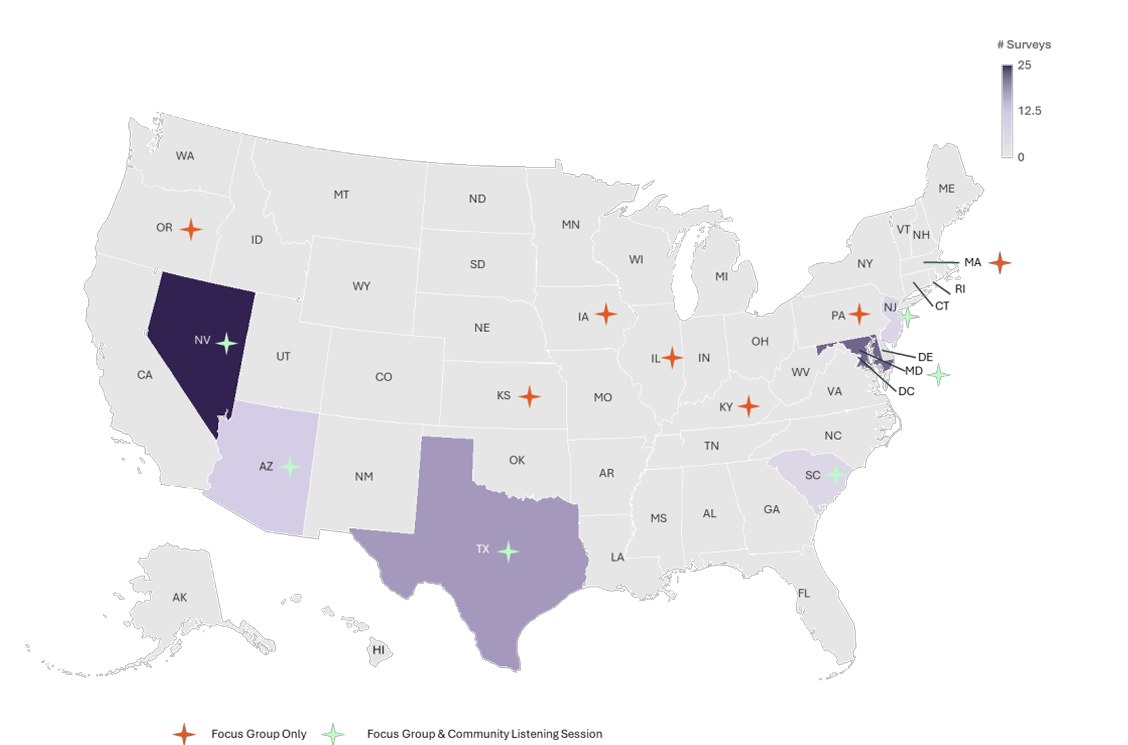A Community-Centered Approach to Understanding Attitudes Towards Childhood Vaccines
The U.S. spends nearly $27 billion each year treating vaccine-preventable diseases.
At a time when measles outbreaks are surging, tuberculosis cases are climbing, childhood vaccination rates are plummeting, and families are struggling to keep up with the rising cost of living, it’s clear that we can’t afford to continue down this path.
Since the start of the COVID-19 pandemic, rising vaccine misinformation and disinformation have fueled growing vaccine hesitancy and mistrust, an alarming trend that didn’t end with the pandemic. Combined with the exhaustion of public health resources, continued healthcare workforce shortages, and increased financial strains on our health care systems, we’re seeing growing health disparities that may disproportionately impact already systemically excluded communities, including those who are LGBTQ+, Asian, Black, Indigenous, Latino, and Pacific Islander.
In 2022, a National Health Interview Survey showed that white adults were more likely to receive their recommended vaccines than Black and Hispanic adults, highlighting persistent vaccination disparities that extend beyond COVID-19 infection. Additionally, data from the Centers for Disease Control and Prevention (CDC) reveals that vaccination rates among children have continued to steadily decline.
As lawmakers double down on disinvestment—restricting health care access and coverage and rolling back public health initiatives and infrastructure—Community Catalyst continues to lean into solutions.
A Roadmap Forward
Community Catalyst’s Community-First Public Health work demonstrates what’s possible if we shift our approach to public health and move away from traditional top-down health intervention models. Flipping the script on traditional public health initiatives our projects resource community-based organizations (CBOs) as message creators and thought partners, not just amplifiers. As seen in programs like the Vaccine Equity & Access Program, CBOs’ cultural competence, established community trust, and deep understanding of their communities’ needs are essential to successfully combating disinformation, expanding vaccine access, and bridging health care gaps.
The Childhood Vaccine Safety Project
Funded by the CDC’s Vaccines for Children (VFC) Program, the Childhood Vaccine Safety Project adopts Community Catalyst’s proven equitable and community-centered approach that embraces the role of CBOs as vital components of the public health system. Actively working to bridge the gap between public health systems and communities, Community Catalyst aimed to reduce disparities in the uptake of recommended vaccines across the lifespan and build trust in the safety of recommended vaccines among caregivers and parents of young children. To do this, we partnered with CBOs across the country to conduct focus groups, listening sessions, and a Parent and Caregiver Survey with the goal of learning more about community-level perceptions and attitudes around childhood vaccination safety.

Key Findings
Findings from the Child Vaccine Safety Project revealed:
- Though there is widespread support for childhood vaccines, especially those required for school, there are consistent themes of distrust, hesitancy, and demand for transparent communication across communities
- Differences among acceptor groups revealed:
- Acceptors want assurance about effectiveness
- Vaccine-hesitant and Late Selective individuals need clearer information on safety, side effects, and monitoring protocols
- “One-size-fits-all” messaging is not effective. Messaging needs to be tailored to communities, there should be cultural considerations, and use of plain language
- CBOs are viewed by communities as trusted messengers
- CBOs’ ties to community, cultural competence, and proximity to underserved families position them as trusted messengers to deliver accurate, clear, and resonant health information
Empowering community-based organizations as thought partners and message creators—rather than passive amplifiers— is essential to acknowledging and addressing the reasons behind vaccine hesitancy and increasing vaccine confidence and uptake.
In an era of shrinking public health infrastructure and rising misinformation, the Childhood Vaccine Safety Project underscores the importance of community voice in shaping effective, equitable vaccination outreach strategies and provides a practical roadmap forward.
As we see lawmakers double down on disinvestment—restricting health care access and coverage and rolling back public health initiatives—it’s clear we cannot afford to continue down the path we’re on. We need to invest in proven solutions that strengthen our public health care system and build it up, not tear it down.
Contact
For additional information or copy of the full evaluation report, please contact the Community-First Public Health team at CFPH@communitycatalyst.org.